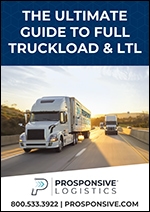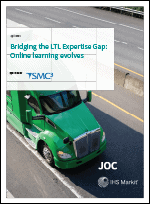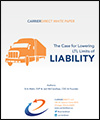Whitepapers
Trucking-LTL
FILTER BY CATEGORY
- 3PL
- 4PL & LLP
- Automation
- Barcode & RFID
- Bulk
- Canada Logistics
- Chemical Logistics
- Cold Chain Logistics
- Customs Compliance & Duty Drawback
- Data Analytics
- Data Management
- Demand Planning & Forecasting
- Distribution Center Management
- Drayage
- E-Commerce
- Education
- Finance
- Fleet Management
- Food Logistics
- Freight Forwarding
- Freight Payment, Audit & Billing
- Fulfillment / eFulfillment
- Global Logistics
- Global Trade
- HazMat
- Intermodal
- Labor Management
- Last Mile / Final Mile
- Lift Trucks / Forklifts
- Logistics IT
- Materials Handling
- Moisture & Temperature Control
- Ocean
- Package Delivery
- Packaging
- Parcel
- Ports
- Printers & Labels
- Rail
- Real Estate
- Refrigerated Warehousing
- Retail
- Retail Logistics
- Reverse Logistics
- Risk Management
- Robotics
- Routing, Scheduling & Shipping Technology
- Security Solutions
- Site Selection
- Small Package Services
- Sourcing & Negotiations
- Supply Chain Execution
- Supply Chain Management & Optimization
- Supply Chain Mgmt/Optimization
- Sustainability
- TMS
- Transportation
- Transportation & Freight Management
- Trucking
- Trucking-LTL
- Trucking-TL
- Vendor Compliance
- Visibility
- Warehousing
- Wireless/Mobile Technology
- WMS
- Yard Management

The Ultimate Guide to Full Truckload & LTL Transportation
Explore FTL and LTL shipping, understand the advantages and disadvantages of each method, and which works best for your organization. Follow along as we take a deep dive into how both strategies can be used in conjunction to make carriers more efficient and save shippers money.

Bridging the LTL Expertise Gap: Online Learning Evolves
Sometimes a business needs to step back and identify a need for educational resources. For those beginning a career in freight management, there are a dozen or more respected logistics or supply chain management educational courses. But, there has been a notable gap in LTL educational resources to bring newcomers up to a competitive level of excellence or enable industry veterans to expand their knowledge base.
Omnichannel Retailers Delivering from the Endless Aisle
In an effort to improve delivery and control the cost of “free shipping,” logistics professionals are implementing omnichannel shipping strategies that deliver from inventory sources in close proximity to their customers, creating an endless aisle. This means a boon for local delivery service providers, and more to manage for shippers. There are more than 500,000 companies in the courier & delivery services industry worldwide employing 2.8 million people. That’s a lot of carriers for shippers to manage as they try to keep costs down and customers happy. Fill out the form to download our latest eBook, “Omnichannel Retailers Delivering from the Endless Aisle,” for the ins-and-outs of delivering from the endless aisle
Unlocking Less-Than-Truckload (LTL) Savings in the Southeast
Check out this eBook offering insights & strategies for managing the complexities of #LTL freight throughout the #Southeast. Learn how to match capacity to cost, measure LTL shipping success and more. #Florida #logistics

The Case for Lowering LTL Limits of Liability
This publication illustrates why it is in the best interest of third-party logistics providers to work with carriers and reduce limits of liability to $1 per pound in the LTL arena. It also describes the key points that cast 3PLs in a favorable light to ultimately forge stronger, more strategic partnerships with LTL carriers. Delivering an analysis of effective procedures for partnership, this whitepaper outlines specific strategies 3PLs can use to better serve carriers by identifying and working to solve the issues that complicate the existing liability landscape.

The Value of a TMS and Logistics Services for Effective Inbound Freight Management
This whitepaper will help you gain a deep understanding of how to effectively manage and understand the nuances of LTL freight shipping. It covers the challenges logistics executives face in inbound freight shipping; areas to focus on to improve inbound freight management; and the requirements of an effective transportation management system. Learn how deploying an effective inbound freight program reaps benefits including significant cost reductions, improved transportation efficiency, better control over incoming goods, a boost in customer service, reduction in cycle time, and even freedom from legal headaches.
